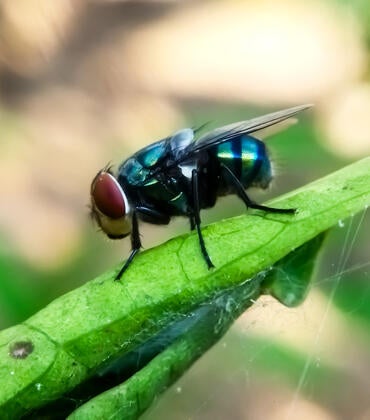
Early humans lived in South African river valleys with deep, fertile soils filled with grasslands, floodplains, woodlands, and wetlands that abounded with hippos, zebras, antelopes, and many other animals, some extinct for millennia.
In contrast to ice age environments elsewhere on Earth, it was a lush environment with a mild climate that disappeared under rising sea levels around 11,500 years ago.
An interdisciplinary, international team of scientists has now brought this pleasant cradle of humankind back to life in a special collection of articles that reconstruct the paleoecology of the Paleo-Agulhas Plain, a now-drowned landscape on the southern tip of Africa that was high and dry during glacial phases of the last 2 million years.
“These Pleistocene glacial periods would have presented a very different resource landscape for early modern human hunter-gatherers than the landscape found in modern Cape coastal lowlands, and may have been instrumental in shaping the evolution of early modern humans,” said Janet Franklin, a distinguished professor of biogeography in the department of Botany and Plant Sciences at UC Riverside, an associate member of the African Centre for Coastal Palaeoscience at Nelson Mandela University in South Africa, and co-author of several of the papers.
Some of the oldest anatomically modern human bones and artifacts have been found in cliff caves along the coast of South Africa. For many years, the lack of shellfish in some layers at these sites puzzled archaeologists. In spite of apparently living near the ocean, the inhabitants hunted mostly big game — the sort of animals that typically live farther inland.
Scientists knew a submerged landscape existed on the continental shelf just offshore, but it wasn’t until recently, perhaps inspired by rising sea levels of our current human-caused global warming, they realized these caves might have made up the westernmost edge of a long-lost plain.
During most of the Pleistocene, the geological era before the one we live in now, these caves were not located on the coast. With so much of the Earth’s water locked up in continent-sized glaciers, sea level was much lower, and humans could have thrived between the cliffs and a gentler coastline miles and miles to the east.
A special issue of Quaternary Science Reviews presents papers using a wide range of techniques to reconstruct the environment and ecology of the Paleo-Agulhas Plain. They reveal a verdant world rich with game, plant, and coastal resources, periodically cut off from the mainland during warm spells between glacial periods when sea level rose to levels similar to those of today, which would have played an important role in human evolution.
Franklin and her colleagues used modern vegetation patterns along the Cape south coast to develop models of the expected vegetation for the various soil types, as well as the climate (especially rainfall) and fire regimes of the past glacial periods that framed most of the timeframe in which modern humans emerged.
Joining her in the research were Richard M. Cowling and Alastair J. Potts of Nelson Mandela University; Guy F. Midgley at Stellenbosch University; Francois Engelbrecht of the University of Witwatersrand; and Curtis W. Marean of Arizona State University.
Vegetation was reconstructed based on a model of the ancient climate and fire patterns of these glacial phases that define human evolution. The group developed the vegetation model based on present-day patterns and environmental conditions, compared their model to an independently derived vegetation map to validate it, then applied it to the climate, landforms, and soils reconstructed for the peak of the last ice age on the Palaeo-Agulhas Plain.
Reconstruction, mapping, and modeling of the paleo-climate, geology, and soils by their collaborators are featured in other articles in the special issue.
The model found the paleo-landscape exposed during glacial low-sea levels added a land area the size of Ireland to the southern tip of Africa. Near the coast, it was dominated by “limestone fynbos,” a low-stature, but species-rich shrubland typical of contemporary South Africa’s Cape Floristic Province, a global plant diversity hotspot. The northern plains were mostly grasslands in shallow floodplains and on shale bedrock.
This savanna-like vegetation is rare in the modern landscape and would have supported the megafauna typical of glacial periods. These game animals, found in the archaeological record, include a great diversity of grazing animals, including the now-extinct giant Cape Buffalo, and others of which no longer occur naturally in this part of Africa, such as giraffes.
The Paleo-Agulhas plain had extremely high plant species diversity, as well as a greater variety of ecosystems and plant communities than currently found in this region, including shale grassland with dune fynbos-thicket mosaic on uplands and broad and shallow floodplains supporting a mosaic of woodland and grassland on fertile, alluvial soils.
This research is published as, “Describing a drowned Pleistocene ecosystem: Last Glacial Maximum vegetation reconstruction of the Palaeo-Agulhas Plain.”
Header photo: https://accp.mandela.ac.za/palaeoscape




